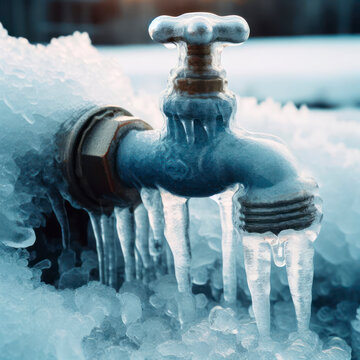Guidance for Avoiding Frozen Pipes in Winter: Specialist Advice
Guidance for Avoiding Frozen Pipes in Winter: Specialist Advice
Blog Article
We have stumbled on the article relating to How To Avoid Freezing Pipes listed below on the web and believe it made sense to quickly share it with you in this article.

Winter can ruin your pipes, specifically by freezing pipelines. Here's how to stop it from happening and what to do if it does.
Intro
As temperatures decrease, the risk of icy pipes boosts, possibly resulting in pricey repairs and water damage. Recognizing how to avoid icy pipes is vital for homeowners in cold climates.
Avoidance Tips
Shielding vulnerable pipes
Wrap pipes in insulation sleeves or utilize warmth tape to shield them from freezing temperatures. Focus on pipelines in unheated or external areas of the home.
Home heating methods
Keep interior spaces appropriately heated, especially locations with pipes. Open cupboard doors to enable cozy air to circulate around pipes under sinks.
How to determine icy pipelines
Try to find lowered water circulation from taps, uncommon smells or sounds from pipelines, and visible frost on subjected pipelines.
Long-Term Solutions
Architectural changes
Take into consideration rerouting pipelines away from exterior walls or unheated locations. Include additional insulation to attics, basements, and crawl spaces.
Updating insulation
Buy high-grade insulation for pipelines, attics, and wall surfaces. Appropriate insulation helps keep regular temperatures and reduces the threat of frozen pipelines.
Safeguarding Exterior Pipes
Garden hose pipes and outside faucets
Disconnect and drain yard hoses before winter months. Install frost-proof spigots or cover outside taps with insulated caps.
Comprehending Icy Pipes
What causes pipes to ice up?
Pipelines ice up when revealed to temperatures below 32 ° F (0 ° C) for extended periods. As water inside the pipes freezes, it broadens, taxing the pipeline wall surfaces and possibly creating them to break.
Threats and problems
Icy pipelines can cause supply of water interruptions, residential property damages, and expensive fixings. Burst pipelines can flood homes and create comprehensive architectural damages.
Signs of Frozen Pipeline
Identifying icy pipelines early can prevent them from breaking.
What to Do If Your Pipes Freeze
Immediate activities to take
If you believe icy pipes, maintain faucets open to alleviate stress as the ice melts. Make use of a hairdryer or towels soaked in warm water to thaw pipes gradually.
Final thought
Preventing icy pipelines calls for positive actions and quick feedbacks. By understanding the reasons, indicators, and preventive measures, home owners can protect their plumbing during cold weather.
5 Ways to Prevent Frozen Pipes
Drain Outdoor Faucets and Disconnect Hoses
First, close the shut-off valve that controls the flow of water in the pipe to your outdoor faucet. Then, head outside to disconnect and drain your hose and open the outdoor faucet to allow the water to completely drain out of the line. Turn off the faucet when done. Finally, head back to the shut-off valve and drain the remaining water inside the pipe into a bucket or container. Additionally, if you have a home irrigation system, you should consider hiring an expert to clear the system of water each year.
Insulate Pipes
One of the best and most cost-effective methods for preventing frozen water pipes is to wrap your pipes with insulation. This is especially important for areas in your home that aren’t exposed to heat, such as an attic. We suggest using foam sleeves, which can typically be found at your local hardware store.
Keep Heat Running at 65
Your pipes are located inside your walls, and the temperature there is much colder than the rest of the house. To prevent your pipes from freezing, The Insurance Information Institute suggests that you keep your home heated to at least 65 degrees, even when traveling. You may want to invest in smart devices that can keep an eye on the temperature in your home while you’re away.
Leave Water Dripping
Moving water — even a small trickle — can prevent ice from forming inside your pipes. When freezing temps are imminent, start a drip of water from all faucets that serve exposed pipes. Leaving a few faucets running will also help relieve pressure inside the pipes and help prevent a rupture if the water inside freezes.
Open Cupboard Doors
Warm your kitchen and bathroom pipes by opening cupboards and vanities. You should also leave your interior doors ajar to help warm air circulate evenly throughout your home.

I found that review about Winter Plumbing Precautions: Preventing Frozen Pipes when browsing the search engines. Sharing is good. One never knows, you might be helping someone out. We love reading our article about Winter Plumbing Precautions: Preventing Frozen Pipes.
Call Today Report this page